Best Wine Fridges: A Complete Guide to Smart Storage in 2025
- January 10, 2025
- 0
Summary: Why you need a wine fridge (more than you think)Whether you’re a casual sipper or a serious collector, a wine fridge is essential for keeping your bottles of
Summary: Why you need a wine fridge (more than you think)Whether you’re a casual sipper or a serious collector, a wine fridge is essential for keeping your bottles of
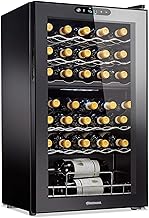
Summary:
Why you need a wine fridge (more than you think)
Whether you’re a casual sipper or a serious collector, a wine fridge is essential for keeping your bottles of vino fresh, especially if they don’t quite fit in your regular fridge. Temperature regulation is only the beginning; a quality wine fridge also provides humidity control and shields bottles from vibrations, which can damage aging wine.
It’s 2025 and the selection of sizes, features and cooling types is greater than ever. At Testergate, we go to great lengths to bring you an understanding of testing things in a clear, no-nonsense way: so you can make informed decisions. Find out why the ultimate wine cooler is a must-have.
Before purchasing, keep the following in mind:
Wine Type: If you store both red and white wine, a dual-zone fridge is ideal since each requires different temperatures.
Capacity: Choose a fridge with the right capacity to match your current needs and allow for future growth.
Space: Measure your space to ensure the fridge fits without any surprises.
By considering these factors, you’ll be able to select the best wine fridge to suit your needs.
A 1-zone wine fridge is one of the easiest to use, and economical options available, perfect for red and white wine lovers alike. The primary feature of this type of fridge is that it has ‘one zone’ which, as the name suggests, means it maintains a single temperature throughout the entire unit.
Application:
Ideal to those who enjoy white wine, the appropriate temperature is usually around 45 to 55 degrees Fahrenheit.
It’s exceptional for small wine collections, a straightforward 1 zone wine fridge keeps wine at the perfect temperature.
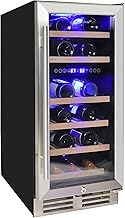
Dual-zone refrigerators are quite popular among wine lovers who enjoy red, white, and even sparkling wine. Each of the two different compartments of these units has its own temperature control.
Use Case:
A single device can maintain the temperature of white wine at 45–55°F and store red wine in the upper zone at 60–65°F.
Benefits:
Maximum adaptability
Accuracy for storing various kinds of wine
Limitations:
Tend to be more expensive and take up more room than single zone models
Best for:
If you are aging exquisite wines or have a diverse collection, this option offers the most control versus performance balance.
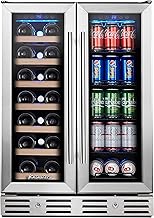
A built-in wine fridge is custom-installed into cabinetry or your kitchen island. For it to sit flush with your countertops without overheating, it is equipped with front venting.
Optimal for:
People who are focused on design and functionality simultaneously since their wine storage will be incorporated into their home seamlessly.
Achieving a modern sophisticated design while ensuring proper wine storage.
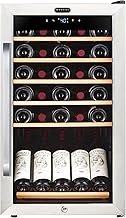
Freestanding wine fridge (free-standing is a removable unit, available in a range of sizes from 12 bottle cooler up to huge 150 bottle cellar heavy weights)
Benefits:
No need for installation, place anywhere you want
Limitations:
Not permitted to implant in cabinet or against wall without adequate venting
Optimal for:
To those wanting to add to their collection with more space for wine bottles or anyone that prefers placement that does not require built-in install.
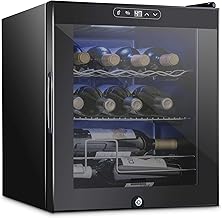
A compressor wine fridge is similar to a regular fridge. It keeps a steady temperature, making it a good option for larger wine collections.
Benefits:
It ensures a stable temperature, which is key for proper wine storage.
Limitations:
These fridges can be a bit noisy and may vibrate, but better models tend to manage these issues nicely.
Best for:
Anyone looking for reliable temperature control for their wine collection and who doesn’t mind a little noise or vibration.
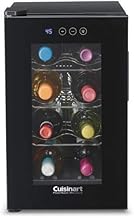
Because thermoelectric wine coolers are extremely silent, and low vibration you may be able to save on energy and be a bit more environment when using them. They are great for people who only have a small wine collection.
Pros:
Smodnii i liubitse ne proihne.
Good for the environment and can help reduce bills.
Cons:
They can be slow in adjusting the temperature in high temp places.
Best for:
The casual consumer of one or two bottles a month, and people who need a more quiet energy star fridge for home office, living room or bedroom.
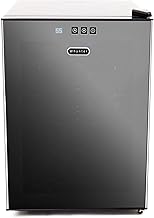
Commercial wine refrigerators are built for operation in commercial applications, a lot of times have several zones, sophisticated temp/humidity controls and are built like tanks. These are great for businesses (bars, restaurants, and wine storage facilities) and also at home in serious collectors’ kitchens.
Benefits:
Different temperature zones so you can store different wines at the right temp
Humidity and temperature control
Built to last – built for heavy use
Limitations:
Usually bigger, so not necessarily sized for smaller spaces.
Optimal for:
Those to whom businesses or wine collectors who need a professional wine cellar
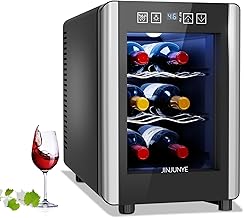
We at Testergate hold nothing back from you and strive for the most truthful, unbiased knowledge:
Actual Tests, Actual Results
We look at reviews conducted on what they actually do and do thorough testing, not based on advertising. We offer you true ideas from the trenches; our reviews are not sold out by brand affiliations.
Best way to open refrigerator is not at all
Every time you open the wine fridge, you are basically causing swings in temperature that shouldn’t be happening as a part of aging. Nerdapproved and its tips will keep any issue away from your collection, helping you to maintain the integrity of your wine.
Yes, but if you want to maintain each at the perfect temperature, a dual-zone wine refrigerator is the best option.
Compressor units provide stronger, more reliable cooling, while thermoelectric models are quieter and vibration-free, making them ideal for smaller or peaceful areas.
Wine can last up to ten years or longer, depending on the wine's quality and type, provided the temperature remains consistent.
Thermoelectric refrigerators are generally more energy-efficient, but modern compressor-based models also come with eco settings to reduce power consumption.
Consider your drinking habits and the number of bottles you typically store. A smaller fridge is ideal for occasional drinkers, while larger models are better for collectors or frequent wine enthusiasts.
Buying a wine fridge is not only about looking for a place to hide your bottles; it is, in fact, an investment with which you ensure that each and every bottle of wine you own will maintain its character, flavour, and quality. For the fountain of all knowledge of how to choose and age wine, be it as a casual enthusiast or serious collector, you have to know all the wine cooling systems out there and their features.
Key Considerations:
Appropriate Capacity
Where to Place and Ventilate
Testergate is out to make shopping as easy for you as possible – so we offer our honest reviews, expert recommendations, and tactical tips.
Who We Are
We are here to assist you with your smart and confident purchase that will improve your wine.

